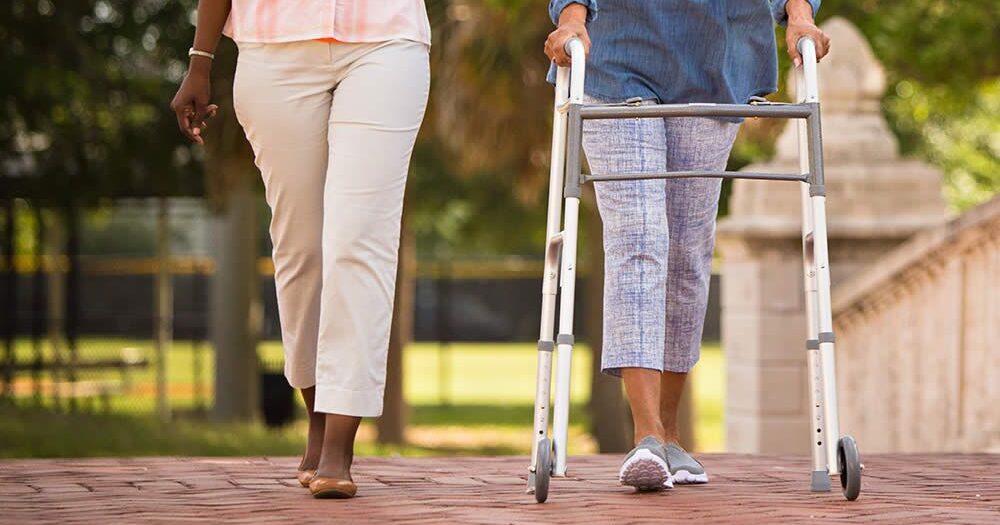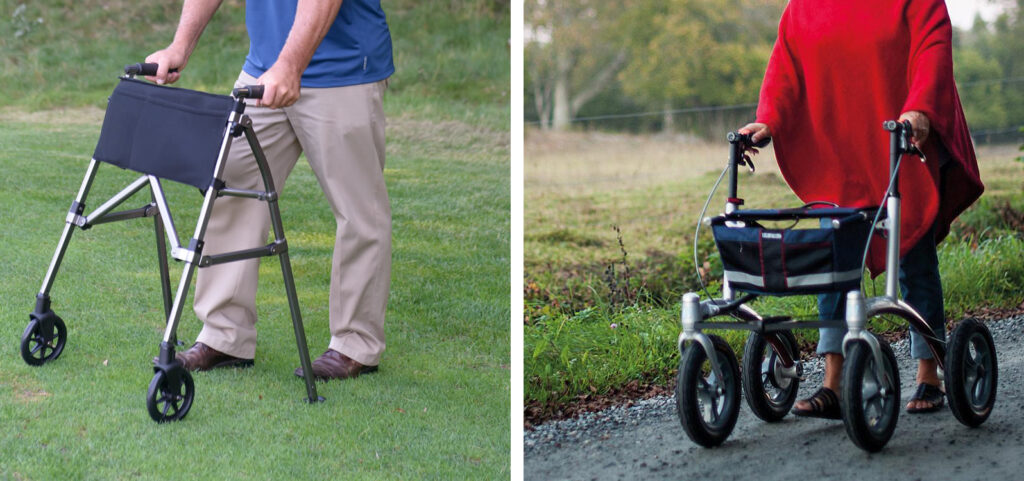People who have broken a bone or are at risk of falling because they are too old or too weak to walk without support need a walker to get around more easily. There are different types of walkers designed for this purpose.
When researching the different options you have in order to determine which one is right for you, the weight of your walker is one of the most important factors to consider. Different types of walkers have different weights. A standard walker, for instance, will have a different weight compared to a heavy-duty walker. Even with walkers with similar designs, the overall weight still varies from one model to the other.
We will go over the various factors that determine the overall weight of a walker and how to make the right buying decision Trusted Source How to Assess What You Need in a Cane or Walker One in four older adults may need a cane or walker, but choosing the right device is important for health and safety. Here’s how to get an assessment. www.aarp.org based on the walker’s weight and other factors.
So how much does a walker weigh? The design of your walker is one of the major factors that determine this. Hence, we will need to get familiar with the different types of walkers to answer this question.

A standard walker is a walking aid characterized by its use of platforms at the bottom of each leg, rather than wheels.
Standard walkers don’t have any wheels on them. Instead, the four legs of the walker have non-skid tips which help to provide stability. To move a standard walker, you’ll have to pick it up completely. Because of this design, being lightweight is a major quality requirement for standard walkers. Typically, they weigh about 5 to 6 pounds. Standard walkers are ideal for people with stability issues who have trouble staying on their feet while working as they provide maximum support and stability.

The two wheels are usually fixed in place, unlike the swivel wheels in 3 wheeled walkers. A front-wheel walker provides extra stability and can help you move over various types of terrain.
As the name implies, front-wheel walkers have wheels on their two front legs. This aids mobility over different terrains. With a walker like the Drive Medical 10210-1 Deluxe, which has wheels on the two front legs, you simply need to raise the back end of the walker slightly to move forward. This is more convenient compared to the standard walker that needs to be carried completely. Because of the added weight of the wheels, front-wheel walkers are slightly heavier than standard ones. They typically weigh between 7 to 8 pounds

Built to support larger users comfortably, heavy-duty walkers (sometimes referred to as bariatric rolling walkers) are built around strength.
Heavy Duty walkers are heavier than the other two types of walkers. They are larger, wider, and feature a more reinforced frame. This allows them to accommodate users that weigh up to 300lbs or more. Heavy-duty walkers may weigh anything between 7 to 12 lbs. Despite being heavier and having a higher weight capacity, heavy-duty walkers are still portable. Many of them have a folding frame, and their height can be adjusted to fit different users.
How much a walker weighs is dependent on various factors. The following are some of the things that may contribute to the overall weight of your walker:
The Frame Material: Aluminum and steel are the two most common materials for constructing walker frames. Of these two, aluminum is the lighter option. While steel is typically more durable, it tends to weigh more.
Frame Size: as a general rule of the thumb, the smaller the size of a walker, the less it is likely to weigh. Basically, a walker with a small frame will weigh less than a bigger walker made with the same material.
Wheels: the wheel components of a walker, which include the rims, bearings, axles, and nuts, all add to the weight of the walker wheels. Hence, walkers with wheels typically weigh more than those without wheels. This is not usually a problem since they don’t need to be lifted while moving like standard walkers. Some walkers like the Medline Standard Steel Folding Rollator Adult Walker feature four large wheels, further adding to their weight.
Height Adjustment: adjustable walkers are typically taller than regular ones since more material is needed to construct them.
Additional accessories: If your walker has extra features like hand grips, baskets, plastic sliders, and so on, it’ll be heavier since all of these accessories will add to its weight.

Lightweight models can be found anywhere from 13 to 15 pounds. Heavy-duty walkers tend to weigh more because of their reinforced parts and are usually around 20 to 25 pounds.
So which type of walker is better? Should you go for a heavyweight or a lightweight walker? Well, the answer to this question isn’t quite straightforward. One would expect that buying a lightweight walker is better since it’ll be easier to lift and move forward.
But weight is only one of several other factors to consider. A heavy walker, for instance, is more likely to have a higher weight capacity and will be more stable. Also, consider the fact that standard walkers are the most lightweight of the different types of walkers. They have no wheels, which means you have to lift them each time you move forward. This can get quite tiring. The heavier walkers, on the other hand, have wheels, so their weight is hardly ever a problem.
As mentioned, more than just the walker’s weight, you also need to consider the weight-bearing capacity of the unit you intend to purchase. This refers to how much weight the walker can support. Generally, lightweight walkers tend to have a lower weight capacity.
The manufacturer will typically indicate both the weight and weight capacity in the product specification for every walker. This way, you can check how much weight the walker can handle and compare it to your own weight.
At the end of the day, the weight capacity is more of an important criterion to check than the weight. While the weight determines how convenient using the unit will be, weight capacity is more of a safety criterion, which naturally takes more precedence.
When it comes to choosing the right walker for a senior or invalid, weight is an important specification to check. However, it is not the only thing to look out for. In fact, the lightest walker is not necessarily the best fit to help you get around safely Trusted Source Senior Health Information: Longevity, Exercises, and More As health needs change with age, one thing remains the same: healthy living is the best way to avoid disease, prolong life, and live happier. www.healthline.com . There’s a need to check other product specifications as well in order to determine the right walker for you.